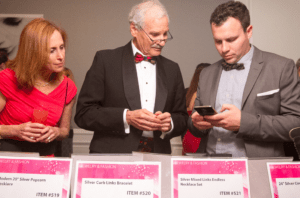How to Persuade New Donors to Join Your Nonprofit Mission
What makes us think a perfect stranger, who’s never given to our organization before, will choose to do so? It’s highly counter intuitive.
What makes us think a perfect stranger, who’s never given to our organization before, will choose to do so? It’s highly counter intuitive.
There are some basic strategies that ensure a successful nonprofit grants program.
They’re surprisingly straightforward.
If you follow this formula, you’ll succeed.
But you’ve got to be methodical, detail-oriented and focused.
Grantsmanship is not an “I’ll just wing it” proposition.
Applying for grants is hard work.
You must:
Let’s take these one at a time.
DetailsBy now you undoubtedly know you’re losing too many first-time donors.
In fact, the Fundraising Effectiveness Project report shows you’re losing an average of 77% of these folks!
Today I want to talk about a subset of new donors who don’t renew. They’re called “third party donors,” and they come to you through a variety of portals:
In a recent post I talked about the Good, the Bad, the Ugly and the Easy of silent auctions.
Today I want to talk about the big kahuna: The Items
If you’ve got the right items, the auction is a winner for all concerned: the bidders, the donors, the item solicitors and your organization. If you’ve got the wrong items, not so much.
DetailsGot a silent auction coming up?
After our recent article (Charity Auctions: Providing a Better Donor Experience), I got a number of questions from folks who’d had negative experiences.
These weren’t just poor donor experiences. They were also real drags on staff.
And I feel your pain.
Sadly, I’ve been there.
I’ve worked these painful events. And I’ve been a bidder at them.
Silent auctions are a bit like the story of the little girl with the curl in the middle of her forehead:
When they are good they are very, very good; when they are bad they are horrid.
Silent auctions can be a great way to both increase event revenue and entertain your guests.
Don’t rule out the importance of the latter.
The very best events I’ve witnessed are those where
Details Charity auctions are an oft-held fundraising event, but even the most seasoned nonprofits often don’t host them well.
Charity auctions are an oft-held fundraising event, but even the most seasoned nonprofits often don’t host them well.
Since auctions are multifaceted events that are relatively complicated to organize, many organizations focus too much on getting the logistics in order and not enough on how they can provide an amazing experience for their donors.
Instead of considering how they can leverage their auction to build deeper supporter relationships, they bolt straight to the fundraising finish line: increasing event proceeds. It’s no wonder that event retention is so low!
In this article you’ll receive great advice from Adam Weinger, President of Double the Donation, as to how you can make your auction a more positive experience for your donors, focusing specifically on how auction software can help.
DetailsIt’s the time of year when nonprofits are evaluating their recent fundraising results and making new year’s resolutions to bring in more contributions in the coming year. But… how?
What will move the needle for you this year?
No doubt there are a number of things you can do more effectively. I’ll be talking about many of them in the weeks and months ahead. Today, however, I want to discuss one thing you may or may not be giving serious thought to.
MONTHLY GIVING.
Chances are you already have some sort of monthly sustainer program. But… is it the best it can be? Could it do more heavy lifting for you?
Today I’ve asked an expert, Bill Sayre, President of Merkle RMG, to give me his thoughts on what you can do right now to begin and/or better manage a monthly giving program.
DetailsNo nonprofit can afford to be an island.
As tempting as it may be to stay in your comfort zone, wearing blinders that enable you to forge straight ahead without noticing what’s going on around you, this is a dangerous practice.
Because sometimes the landscape changes dramatically. And when it does, your nonprofit could get left behind. Unless you’re paying close attention.
This happens, for instance, when emergencies arise. Earthquakes. Hurricanes. Floods. Drought. There have been years I’ve had donors tell me “This year we’re giving all our extra resources to respond to… Hurricane Katrina… Haiti relief… the Fukushima disaster… anti-hate organizations… and so forth.”
In the face of such natural human impulses, what can you do?
When things outside your nonprofit’s doors portend impact for your ability to fulfill your mission, you need to be prepared.
DetailsIt’s that time of year. You know. The best movies of the year. Best bos of the year. Most embarrassing moments of the year. List time! Here’s my “Top Ten” list of the most-read Clairification articles in 2016. Some of them were written this past year. Some in previous years (oldies, but apparently goodies –…
DetailsDo you have that year-end feeling?
You know, the one that many fundraisers get around this time of year?
Kind of frenetic? Kind of anxious?
You’re not alone.
Details